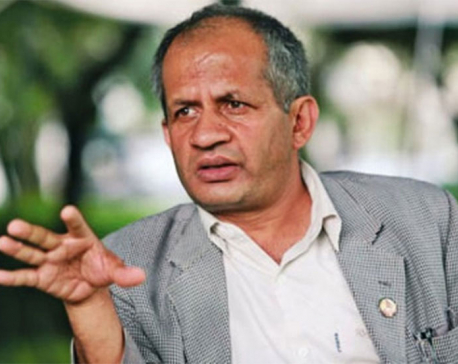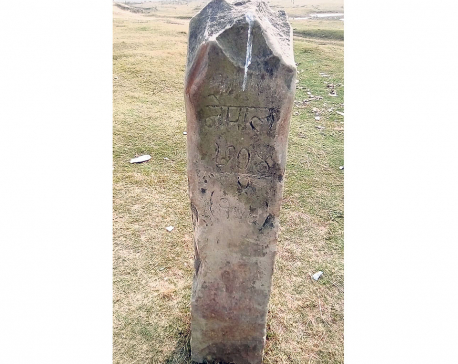
OR
Work together to sort out water issues
Published On: May 27, 2019 02:00 AM NPT By: Republica | @RepublicaNepal
One of the grievances of people living in Tarai plains along the Indian border has been that dams and structures built by India along the border lines have affected their lives. Often, such structures are attributed as the main cause of inundation in Nepali side, inviting resentment among people. Such incidents also have become the cause of irritants in Nepal-India relationship. An incident of similar kind has been reported from Rajbiraj. At least 90 families in Gobargadha of Saptari district have been trapped by the Koshi River after the Indian side reportedly diverted its water to the western side. According to the local authorities, about 300 people are encircled by Koshi. The Indian side released water from a pilot channel built along the western side of the river despite protests by the locals. With water suddenly released from the 17 km pilot channel at Gobargadha, the riverside village has turned into an island, trapping the local residents. There is a commotion and situation of panic among the locals.
Hanumannagar Kankalini Municipality has started rescue efforts for the trapped locals. Municipality authorities complain that locals were not even informed prior to releasing water which has caused inundation. If prior notice had been issued, the Nepali authorities claim, citizens could have been evacuated to safer grounds. Koshi water overflowing the channel has also swept away the infrastructure including half a dozen boats belonging to the municipality, firewood, timber and livestock. If this situation persists, greater disaster and loss of life in the trapped settlement cannot be avoided. The local government has claimed that District Administration Office, Home Ministry and the Prime Minister’s Office were informed five months ago about the construction of the pilot channel by Indians but Nepali side did not take up the issue with Indian authorities. Locals have accused India of trying to divert Koshi to save Indian settlements while putting Nepali villages at risk of inundation.
Koshi brings troubles to residents of the border side almost every year and it has become the cause of sorrow for Nepalis and Indians alike. Nepali authorities often rise to action only when damages have been done and lives affected. Indian side looks more concerned but Indian authorities tend to work in such way whereby settlements in Indian side remain safe but settlements in Nepali side suffer inundation. For example, India had invested more than 1.5 billion Indian rupees after 2010 to save the Indian settlements on the eastern side of the river. Similar efforts from Nepali side seem to be missing. Last monsoon, Koshi flood on the Saptari side had inundated nearly 1,000 houses for nearly three weeks. Commitments were made to avert similar tragedy in the future but Nepali authorities do not seem to have worked much in this direction. We urge the Nepali and Indian authorities to sit together and negotiate for such an arrangement whereby no Nepali villages (and of course no Indian village either) get inundated. The unilateral move from Indian side to divert the flow of water that causes floods in Nepali side should be discouraged. No Nepali villagers should suffer due to insensitivity of Indian side and lack of necessary measures from Nepali side to avoid such tragedy, especially when it is induced by human action.
You May Like This

Nepal, India interdependent: Minister Gyawali
KATHMANDU, Aug 14: Minister for Foreign Affairs Pradeep Kumar Gyawali has termed the Nepal-India relations interconnected and interdependent. ... Read More...

What are we teaching?
Nepal has been spending a lot of money for public education. In fiscal year 2017/18, the country allocated Rs 126... Read More...

India trying to shift border pillar: Locals
TIKAPUR, Jan 22: Locals of Tikapur have accused India of attempting to encroach upon the land in the Nepali territory... Read More...




Just In
- Govt receives 1,658 proposals for startup loans; Minimum of 50 points required for eligibility
- Unified Socialist leader Sodari appointed Sudurpaschim CM
- One Nepali dies in UAE flood
- Madhesh Province CM Yadav expands cabinet
- 12-hour OPD service at Damauli Hospital from Thursday
- Lawmaker Dr Sharma provides Rs 2 million to children's hospital
- BFIs' lending to private sector increases by only 4.3 percent to Rs 5.087 trillion in first eight months of current FY
- NEPSE nosedives 19.56 points; daily turnover falls to Rs 2.09 billion















Leave A Comment